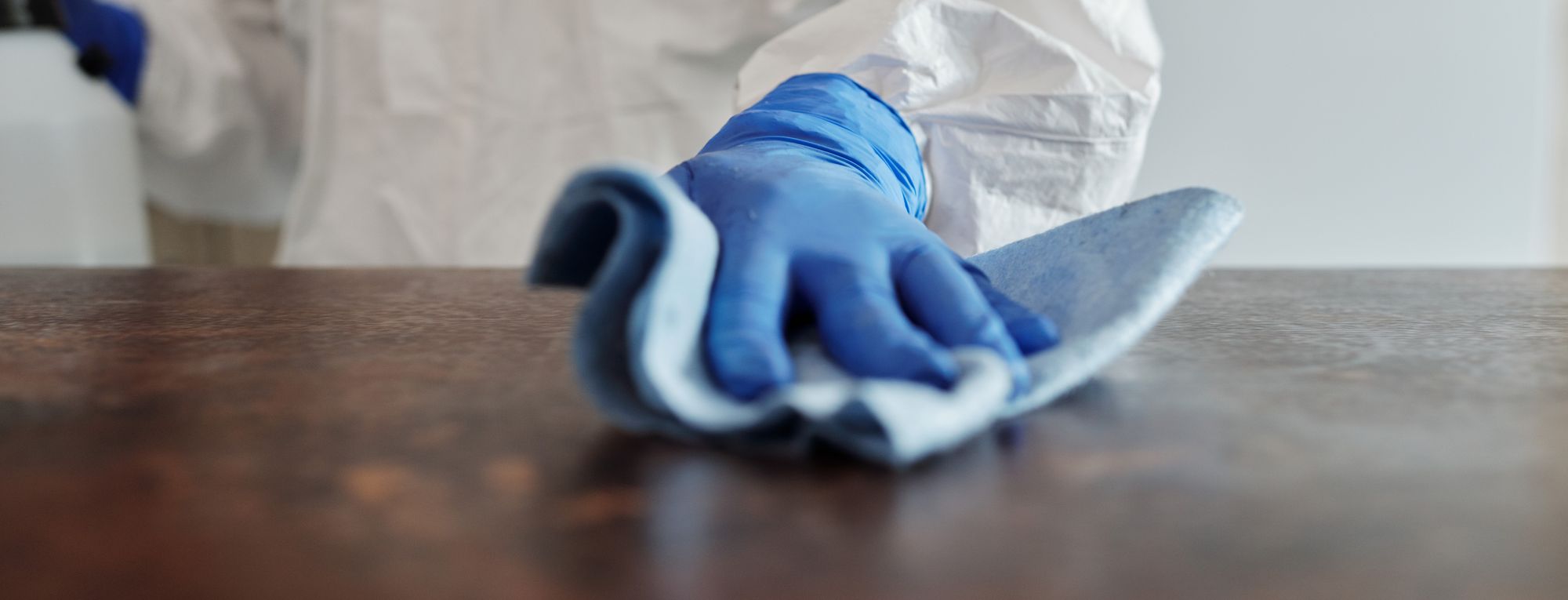The scientific world is always looking for solutions to modern problems.
Today’s most-glaring problem is the spread of coronavirus which has already claimed more than half a million lives in its first wave.
Reducing the threat of any future ways of infection requires keeping surfaces microbe-free. While disinfecting sprays and cleaners go a long way in doing that, their hygienic powers only last a few minutes. This makes restricting coronavirus in high-contact areas in public spaces almost impossible.

Except that now, a nanotechnology discovery from 2012 may have made the breakthrough towards a permanent way of killing microbes on contact with a surface.
The inspiration came from dragonfly wings, which are made up of nanometric, geometric shapes; structures that are very efficient at killing bacteria.
Knowing this, researchers Vladimir Baulin and Sergey Pogodin from the Department of Chemical Engineering at the Universitat Rovira i Virgili in Catalonia, began attempting to replicate the structures as a way to produce anti-bacterial materials. Together with Marc Werner, from the Leibniz-Institut für Polymerforschungin Dresden and Elena Ivanova from Melbourne’s RMIT, their work found that the key to killing microbes on a surface without chemicals was the elasticity of nanopillars and how they can retain and release energy.
As the scientific journal Phys.org reports, “… known as the biocide effect, these mechano-bactericidal properties—by which bacteria are killed almost instantly when they come into contact with the pillars without any need to use a chemical substance—raises numerous questions that researchers are attempting to answer by experimenting with different shapes and geometries that will help them to understand which has the most efficient bactericidal effect.”
Building on this understanding, the team found that by varying the height of the pillars they could also vary the amount of energy retained. From this, they developed a model from which researchers can calculate the elastic response of a structure and so gauge it antibacterial properties.

As Vladimir Baulin observes, “Even the solid and rigid materials become flexible if one of the dimensions is much longer than the others (for example, a guitar string or a long pillar).”
“The deformation forces of the pillar caused by the contact of the bacteria are so high that they can even break the bacteria's cell wall, thus providing a new mechanism for killing them,” says the report. “These forces are associated with surface tensions imposed on the bacterial cells. The pillars under the bacteria that approach stretch more at the edges, whereas the pillars located under the center of the bacteria practically do not change. The study shows, then, that the gradual variation in the height of the pillars of a nanometric surface can determine their bactericidal efficacy.”
The researchers now hope that their discovery can be further developed into a new class of antibacterial materials.
While at present the method is only effective against bacteria, the ongoing pandemic has made the need to develop antiviral surfaces ever more important.
As governments and companies are investing heavily in ways to treat COVID-19, vaccinate against coronavirus, and disinfect areas, it is hoped that this new way of designing surfaces at the nanoscale could be a route to killing viruses on places such as door handles, lift buttons, and hand rails.

Nanotechnology has already found a route to anti-viral fabrics by embedding textiles with metallic nanoparticles. For example, the Prague-based firm AG CHEMI GROUP has collaborated with Czech universities to develop a process to place nanoparticles of copper, zinc, silver, gold, and cerium into fabric, giving it anti-viral and anti-bacterial properties. Called NANO AB PP-25, the company claims the fabric can be natural or synthetic, washable, durable, and kills 99.9% of all known germs and viruses.
With the company now planning to start production of the nanofabric before the end of the year, and with research ongoing into how nanoscale pillars can make antimicrobial surfaces, it maybe that the breakthroughs the world is waiting for to restrict coronavirus will come from nanotechnology.
Photo credit: Matilda Wormwood from Pexels, Andrea Piacquadio from Pexels, Javon Swaby from Pexels, pascalhelmer from Pixabay, & Gerd Altmann from Pixabay